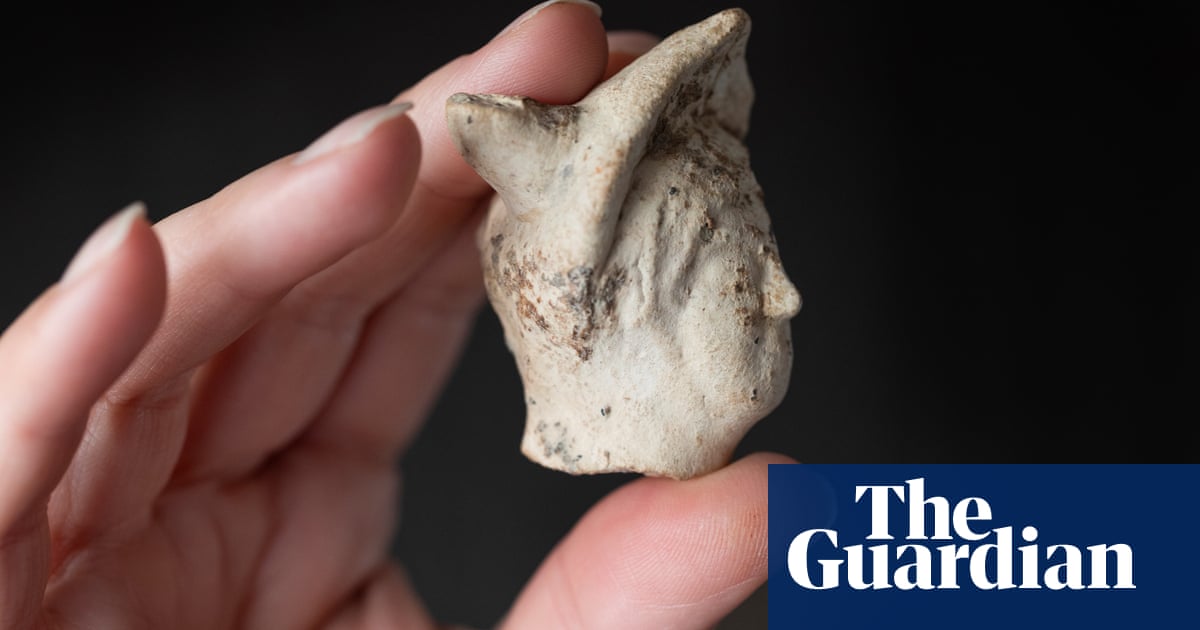A âvery rareâ clay figurine of the god Mercury, one of fewer than 10 ever found in Britain, has been discovered at a previously unknown Roman settlement that once sat next to a busy port â but is now 10 miles from the sea.
The site of the settlement, in the modern hamlet of Small Hythe (or Smallhythe), near Tenterden in Kent, now sits among fields, but was once an important link in the Roman empireâs import and infrastructure network in southern England and the Channel.
The coastline in this part of Kent has changed dramatically since the Roman era, thanks to large-scale land drainage and reclamation and the silting of a once wide river estuary. Archaeologists in the 1990s excavated the site of a medieval shipyard in Small Hythe that was once visited by King Henry V.
The discovery that it had previously also been the site of a Roman settlement, along with the artefacts found there, was âmassively excitingâ, according to Nathalie Cohen, a National Trust archaeologist.
The settlement was small in scale and modest in prestige, said Cohen. âItâs not Roman Londinium, itâs not Cirencester. Itâs a smallish settlement by a port.â That said, âit would have been vital in the logistics chain for exporting timber and iron out of [south-east England] and importing materials from the continentâ.
Other finds from the site include a tile stamped with the mark of the Classis Britannica, the Roman fleet in Britain, underlining the significance of the waterside site.
The undoubted star find, however, is the figure of Mercury â the god of the fine arts, commerce and financial success â of which only the head remains, wearing his characteristic winged headdress. While models of the god are more common in metal, âto come across a head of a figurine of Mercury in pipeclay is incredibly rare,â said Cohen.
Pipeclay figurines were made of clays local to areas of modern day France and Germany and were imported, but most found in Britain are of female deities, usually Venus.
after newsletter promotion
Rather than appearing in a grand temple, experts believe that the statue is likely to have have a more modest use. âPipeclay figurines were mainly used by civilians for private religious practice in domestic shrines and occasionally in temples and the graves of often sick children,â said Matthew Fittock, an expert on ceramic figurines in Roman Britain.
Intriguingly, it appears to have been deliberately broken, perhaps indicating a ritual significance, he said. âRather than pieces being discarded because they were broken, there is evidence to suggest that deliberately breaking some figurine heads was an important ritual practice, whereas whole figurines are usually found in graves.â







